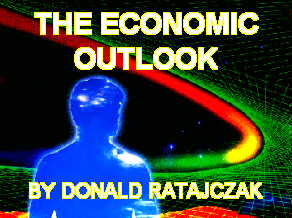|
|
|
May 31, 2001 |
Poor California. In 1999, that state paid $9 billion for wholesale purchases of electricity. This year, the bill will be more than $60 billion.
That is what can happen when the state mandates a risky energy policy. When the state allowed wholesale prices of electricity to fluctuate according to market conditions, they made two requirements.
First, electricity must be bought on the spot market. The alternative, long term contracts, were assumed to not be in the best interest of California consumers.
Second, electricity rates still would be controlled at the consumer level.
Added to those constraints were assumptions that electricity capacity would remain ample in the west despite the absence of power plant building in California, and that cheap natural gas would be available to drive the turbines when electricity was required.
This partial deregulation bankrupted one company and nearly pushed another into receivership. The growth of the Mountain states and a severe drought in the Columbia river basin removed the excess electricity capacity in that part of the country.
A cold winter and the increasing use of natural gas for summer electricity generation to meet clean air standards eliminated the cheap gas assumption.
When a wrong deregulation model is used based upon assumptions that do not develop, economic problems are bound to develop. Indeed, the pain of higher prices is the economy's signal to change the model and adjust to new reality.
Instead, Governor Davis wants to suppress the economic pain. He is even using the evidence of economists to declare that the higher prices will harm the state.
Although I have not seen the economic study, it does not surprise me to learn that higher prices will harm California's prosperity. However, the legitimate question is whether higher prices are appropriate.
To a large extent, I believe that they are. By relying upon the excess power capacity of others, California exposed itself to the physical reality that electrical power loses energy the longer the distances transmitted. Purchasing from distances rather than producing locally will necessarily raise the price in equilibrium.
Also, the natural gas sold into California to power the electric plants cost more than gas sold to New England because the transmission system to New England has been used extensively for many years. Transmission from Texas or Colorado to California is relatively new and there is no profitable heating season to help defray the costs.
None of this is to say that some price opportunities were not exploited from some electricity wholesalers. However, much of the California problem is the result of California energy policies that are only slowly being reversed.
Of course President Bush could have pursued a more balanced national energy policy that addressed consumption as well as production. If fleet mileage guidelines for light trucks had been pursued as vigorously as for passenger cars, the sports utility vehicle (which is declared a truck because of its structure) would either have been more efficient or less aggressively marketed.
Nevertheless, the pricing system is the economic temperature that determines whether a problem exists. It is not what caused the problem. To demand that prices be capped, or fuel taxes be cut, or some other price distorting change in policy be pursued to minimize the damage from higher prices, is to deny the economic pain.
By doing that, we deny the adjustments needed to minimize that pain today and avoid it tomorrow. There are flaws in the President's energy policies, but none as large as the economic flaws created by energy price controls.

